- Joined
- Oct 9, 2007
- Messages
- 47,619 (7.44/day)
- Location
- Dublin, Ireland
| System Name | RBMK-1000 |
|---|---|
| Processor | AMD Ryzen 7 5700G |
| Motherboard | Gigabyte B550 AORUS Elite V2 |
| Cooling | DeepCool Gammax L240 V2 |
| Memory | 2x 16GB DDR4-3200 |
| Video Card(s) | Galax RTX 4070 Ti EX |
| Storage | Samsung 990 1TB |
| Display(s) | BenQ 1440p 60 Hz 27-inch |
| Case | Corsair Carbide 100R |
| Audio Device(s) | ASUS SupremeFX S1220A |
| Power Supply | Cooler Master MWE Gold 650W |
| Mouse | ASUS ROG Strix Impact |
| Keyboard | Gamdias Hermes E2 |
| Software | Windows 11 Pro |
A little earlier this month, NVIDIA spent quite some money on premium courier to send us a package that wasn't exactly light. On opening it, we found a fun-size steel crowbar with an NVIDIA logo inscribed on it, and a message that read "for use in case of zombies or..." which was pretty cryptic. We thanked NVIDIA for the back-scratching tool, and got back to work. While Gabe Newell made the crowbar a pop-culture symbol, there is only one socially-acceptable use of this otherwise boring tool: opening wooden crates, which were used to ship stuff overseas, before modern containers came to be. One such crate made its way to our doorstep, not floating over the sea, but gliding its way over the Autobahn aboard another expensive "same day" courier.
The top of the crate sure was catchy, which cautioned us of "weapons grade gaming power". Its side had a geekspeak print. "0b1010110010" is binary for "690" (0b is a binary prefix). The other two lines make no sense. Upon opening the crate, and a sheet of foam, there it is, something we'll be toying with for the better part of this week.
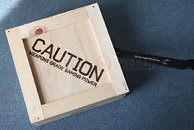
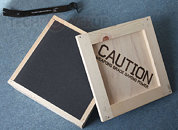
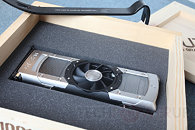
We doubt if any AIC partner can match the design finesse of NVIDIA reference design GeForce GTX 690 (pictured below). Built with advanced materials such as a magnesium alloy that supercar engines are made of, NVIDIA's card design has some serious performance-oriented design gone into it. The central portion, which cools the VRM and bridge chip, is made of magnesium alloy, with copper+aluminum channel blocks cool each of the two GeForce Kepler 104 GPU systems.
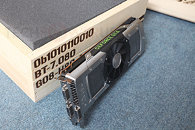
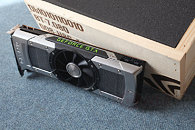
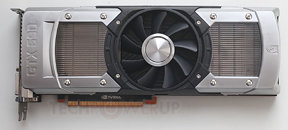
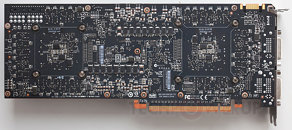
The GTX 690 has three dual-link DVI connectors and a mini-HDMI, similar to previous-generation GeForce GTX 590. Like the GTX 680, you can run triple-monitor 3DVision Surround setups right off a single card. There's one SLI connector, which lets you pair the card with another of its kind (only). The card uses a 10-phase VRM, which draws power from two 8-pin PCIe power connectors, yet the TDP of the card is rated to be just 300W (relatively, not much).
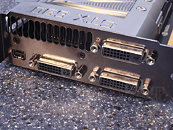
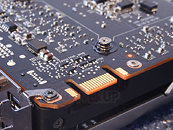
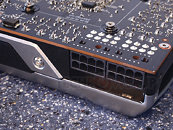
Last but not the least, is the answer to a looming question with how big the card really is. It occupies no more than two expansion slots, and is just as long as a GTX 590.
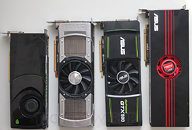
As for prices, NVIDIA informed us that apart from its US MSRP of US $999, Britons will be staring at a £829 price-tag, and continental Eurozone buyers at 829€ (excl. VAT). Expect a thorough performance review on May 03.
View at TechPowerUp Main Site
The top of the crate sure was catchy, which cautioned us of "weapons grade gaming power". Its side had a geekspeak print. "0b1010110010" is binary for "690" (0b is a binary prefix). The other two lines make no sense. Upon opening the crate, and a sheet of foam, there it is, something we'll be toying with for the better part of this week.



We doubt if any AIC partner can match the design finesse of NVIDIA reference design GeForce GTX 690 (pictured below). Built with advanced materials such as a magnesium alloy that supercar engines are made of, NVIDIA's card design has some serious performance-oriented design gone into it. The central portion, which cools the VRM and bridge chip, is made of magnesium alloy, with copper+aluminum channel blocks cool each of the two GeForce Kepler 104 GPU systems.




The GTX 690 has three dual-link DVI connectors and a mini-HDMI, similar to previous-generation GeForce GTX 590. Like the GTX 680, you can run triple-monitor 3DVision Surround setups right off a single card. There's one SLI connector, which lets you pair the card with another of its kind (only). The card uses a 10-phase VRM, which draws power from two 8-pin PCIe power connectors, yet the TDP of the card is rated to be just 300W (relatively, not much).



Last but not the least, is the answer to a looming question with how big the card really is. It occupies no more than two expansion slots, and is just as long as a GTX 590.

As for prices, NVIDIA informed us that apart from its US MSRP of US $999, Britons will be staring at a £829 price-tag, and continental Eurozone buyers at 829€ (excl. VAT). Expect a thorough performance review on May 03.
View at TechPowerUp Main Site
Last edited:




 that's awesome crate
that's awesome crate


